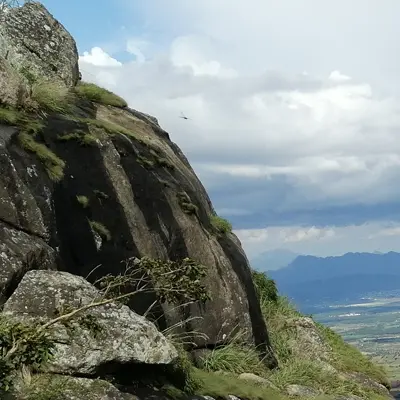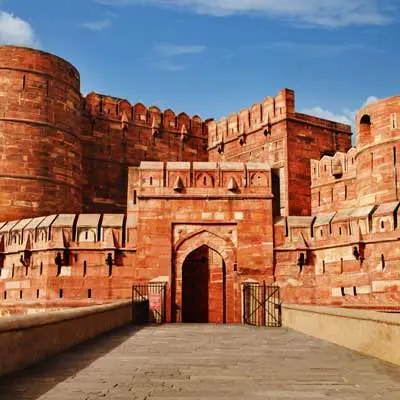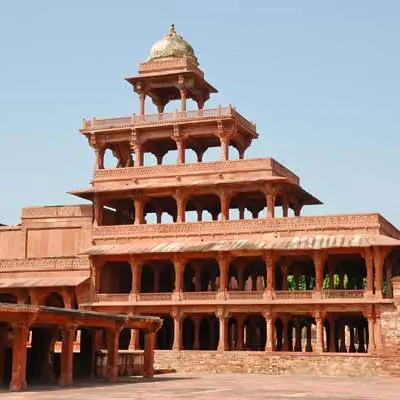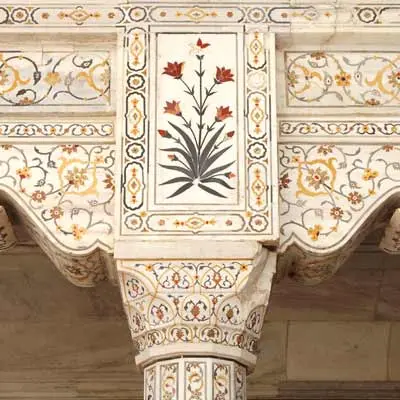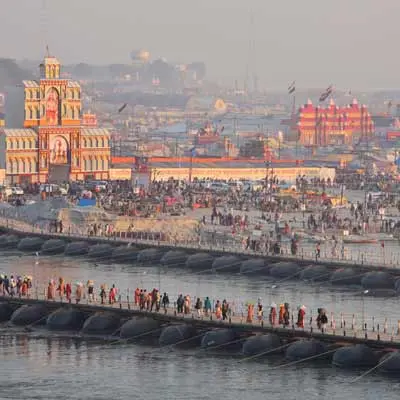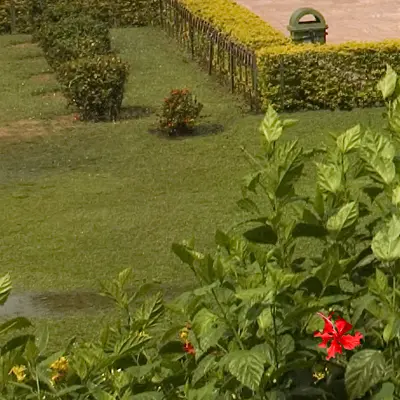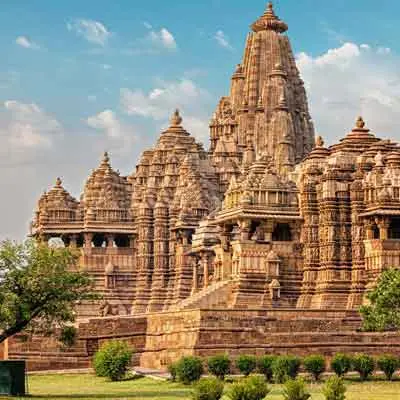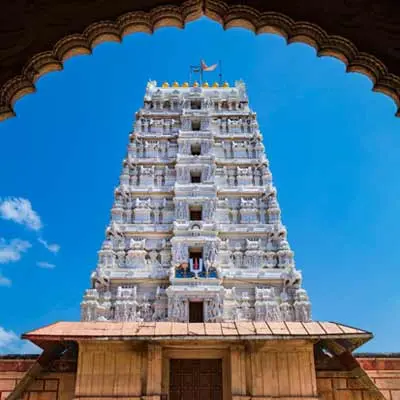
About Jhansi
Located on the banks of the Betwa and Pahuj Rivers, Jhansi is an astounding blend of historical grandeur and cultural diversity.
History of Jhansi:
The name “Jhansi” supposedly comes from “Jhainsi,” which means “a faint shadow,” connected to how the fort looks from far on a hilltop. Though first under Chandela reign the city really developed when Raja Bir Singh Deo of Orchha took charge in the 1600s. Later it earned global fame as the homeland of Rani Lakshmi Bai - a fearless queen who fought the British in 1857 at the head of her troops.
Culture:
Jhansi flourishes on courage, faith, strong roots. Occasions such as Jhansi Mahotsav showcase its warrior soul using rhythm, visuals, and traditional tunes. Food from Bundelkhand, local speech, handmade crafts keep the pulse vibrant in this old land.
Geography:
Located down south in Uttar Pradesh, Jhansi touches Madhya Pradesh featuring rugged rock zones, arid highlands, also serene riverside sights.
Why Visit Jhansi:
Jhansi attracts visitors through its India's vibrant history. From old fortresses and majestic palaces to tranquil shrubs and mind-blowing museums, each spot narrates stories of bravery and love for the nation - turning it into a best destination worth exploring across Uttar Pradesh.
Top Tourists Places To Visit in Jhansi
Jhansi Fort
Constructed under Raja Bir Singh Deo’s rule, this fortress from the 1600s rises as a significant landmark in Jhansi. Resting high on Bangira Hill, it gives wide-open looks across the urban stretch below. Within its walls is a places of worship, old horse shelters, along with hidden passages warriors trusted when fighting.
Highlights: Light and sound show showcasing Rani Lakshmi Bai’s valor.
Best Time to Visit: November to March.
Entry Fee: ₹25 (Indians), ₹300 (foreigners).
Rani Mahal
Back when the brave queen lived here, this palace showcased beautiful wall paintings, curved porches - also loads of rare 1700s treasures. Today, it functions as a museum, preserving remnants from Bundelkhand's royal past.
Highlights: Ancient sculptures and royal exhibits.
Best Time to Visit: October to February.
Government Museum
A popular spot for fans of ancient stories, this place has arms, handwritten pages and artwork from Chandela times along with traces of the 1857 rebellion
Highlights: Archaeological relics, coins, and weapons used in Rani Lakshmi Bai’s era.
Best Time to Visit: Year-round.
Entry Fee: ₹10.
Raja Gangadhar Rao Ki Chhatri
A great memorial established for Rani Lakshmi Bai's spouse, this structure showcase Mughal meeting Rajput design, enveloped by meticulously maintained lawns.
Highlights: Stunning arches, peaceful ambiance.
Best Time to Visit: October to March.
St. Jude's Chapel
Constructed back in 1940, this Catholic Church attracts crowds each October when the yearly St. Jude's Chapel festival welcoming countless visitors from far and wide.
Highlights: Gothic design and stained-glass interiors.
Best Time to Visit: October.
Top Things To Do In Jhansi
Heritage Walks
Stroll through narrow streets teemed with ancient buildings alongside vibrant markets. This walk takes you to Rani Mahal, then Lakshmi Bai Park, followed by temples.
Duration: 2–3 hours.
Best Suited For: History and architecture lovers.
Approx. Cost: ₹200–₹400 (guided).
Museum Tour
Visit the Government Museum along with the Rani Mahal Museum to understand Bundelkhand’s journey - from Chandela kings through Revolts against the British.
Best Suited For: Students, families.
Local Bazaar Shopping
Shop for brass crafts, along with leather accessories while admiring Bundelkhandi artwork across Sadar Market or Sipri Market.
Best Suited For: Souvenir seekers and culture enthusiasts.
Attend Jhansi Mahotsav
Occurring each year around January or early February, this event features traditional dancing, handmade goods, while also highlighting warrior-style displays that honor Jhansi's history.
Best Suited For: Cultural travelers.
Explore Nearby Forts
Make a visit to Orchha and Datia’s historical forts in your Jhansi tour. Blending these historical gems into one immersive journey through Bundelkhand’s regal past.
Best Suited For: Road trip lovers, photographers.
Best Time To Visit Jhansi
The best time to visit Jhansi’s is from October to March as the temperatures are mild and the weather is perfect for exploration.
Winter (Oct–Feb): Temperatures range between from 10°C up to 25°C - Ideal period if you're planning quick outings or exploring old forts.
Summer (March to June) – Jhansi is scorching in these months, often elevating to 40°C. Outdoor exploration is suggested either during the early hours of the morning or after sunset.
Monsoon (Jul–Sep): Rains fills the city with lush greenery but it might affect outdoor explorations. If you wish fewer crowds and calm sightseeing this month is ideal.
Clothing Recommendations
- Winter (Oct–Feb): Light woollens or jackets for cool mornings and evenings.
- Summer (Mar–Jun): Light cottons, sunglasses sunscreen and hat
- Monsoon (Jul–Sep): Waterproof shoes, umbrella, and quick-dry clothes for rainy days.
How To Reach Jhansi?
By Air :
There isn't an airport in Jhansi. The nearest is Gwalior Airport, located 100 km away. Regular flights to Delhi, Mumbai, and other important cities will operate here. You can take a bus or hire a taxi from airport to Jhansi, taking in the scenic countryside.
By Rail :
One of the main railway hubs in the North-Central Railway zone is Jhansi Junction (JHS). It is well connected to a numerous important cities, such as Mumbai (1,080 km), Bhopal (315 km), Lucknow (295 km), and Delhi (410 km). Frequent operation of superfast express trains like the Shatabdi Express, Taj Express, and Gatimaan Express make journey convenient
By Road :
Jhansi is located near two major highways, NH 27 and NH 44. It is connected to nearby destinations like Gwalior, Kanpur, Lucknow, and Khajuraho by regular buses or taxis. If self-driving you pass through serene villages in Uttar Pradesh from Jhansi to Kanpur.
Things to know before visit Jhansi
- Respect customs - The local residents value customs and tradition highly. Dress modestly, respect local culture and pay reverence to their religious sites.
- Language: Hindi is widely spoken, and English is understood by most residents
- Connectivity: Jhansi has good mobile networks, though signals may fluctuate near rural attractions so download offline maps.
- Transport: Auto-rickshaws, taxis, and e-rickshaws are easily accessible within the city.
- Safety: Jhansi is basically safe for solo and female travelers. But evade isolated areas late at night.




